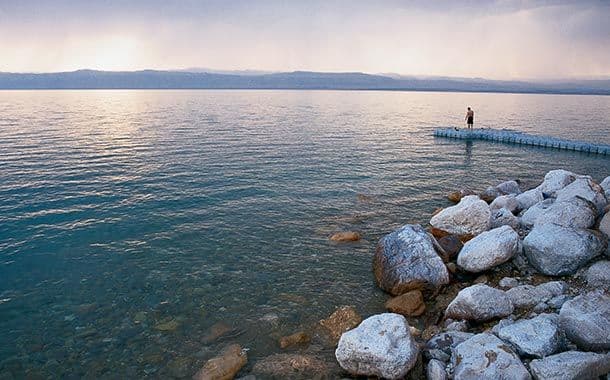Our planet is full of spectacular wonders for us to experience. Nothing beats that feeling we get while witnessing a world-wonder for the first time. A wonderful example of a truly unique feeling is the first time you swim in the Dead Sea. Well, swimming is actually the wrong choice of words. More accurately, you
float in the Dead Sea. Can you imagine that? It really catches your attention and it should. The Dead Sea has been mesmerizing people for thousands of years. Scientists continue to test its mysterious waters and more questions seem to pop up all the time. Here are some interesting facts and common misconceptions about the Dead Sea you should know while preparing for a
holiday in Jordan. It is not a sea
The Dead Sea, often referred to as the Salt Sea, has a bit of a misleading name because it’s actually a salt lake. With one source of water from the Jordan River, there is no connection to the ocean. Huge amounts of salt are formed because the nature of this landlocked area causes a very high evaporation rate. This makes the water so dense that people float in it as a result of natural buoyancy. This can also be experienced in the Great Salt Lake of Utah, USA.
It is the lowest point on Earth
At 423 metres below sea level, the surface of the Dead Sea is the lowest point on Earth in open air. It is also the deepest hypersaline lake in the world at 377 metres below the surface. Hypersaline refers to the significant amounts of sodium chloride as well as other mineral salts. Such lakes have saline levels roughly 8.6 times more than that of the ocean.
It is not the saltiest body of water in the world
With 33.7% salinity, it is commonly assumed the Dead Sea is the saltiest body of water in the world. However, Lake Assal, Lake Garabogazköl, and some lakes in the McMurdo Dry Valleys in Antarctica have higher salinities.
It is a healing refuge
The Dead Sea is known around the world as being a centre of health research and treatment. Travellers to this area are not just tourists, but some seek treatment mainly for skin conditions. The mud of the lake is used in a variety of skin and beauty products. The water has a specific amount of healing minerals, the atmosphere has a very low content of pollens and other allergens, the solar radiation has a reduced ultraviolet component than any other place, and there is a high atmospheric pressure at this unique depth. All these factors attain to massive healing effects on the body. People say as soon as you feel the mud or water on your skin, you feel no dryness and it looks much smoother. There are a number of great spas in the resorts surrounding the Dead Sea where you can experience a truly rejuvenating and relaxing time for your mind and body.
There is life in the Dead Sea (sort of)
Such a rough environment prevents animals from flourishing in the Dead Sea (that’s why it’s called the Dead Sea). While fish and aquatic plants are non-existent, microscopic organisms of bacteria and some forms of fungi do exist in very small quantities.
It is not just salt
The shores of the Dead Sea look really fascinating as they are completely crystallized with salt, but an unusual feature of the unique lake is that it can produce asphalt as well or Bitumen. Blocks of it have been found time and again just floating on the surface of the lake. It bubbles up and forms these blocks from the seeps on the bottom of the lake. The Ancient Egyptians are known to have imported the Bitumen from the Dead Sea to use in their mummification processes.
There's more than one way to plan a
Jordan holiday. Check out the various holiday packages available for this historical destination.By Amal Ghali
